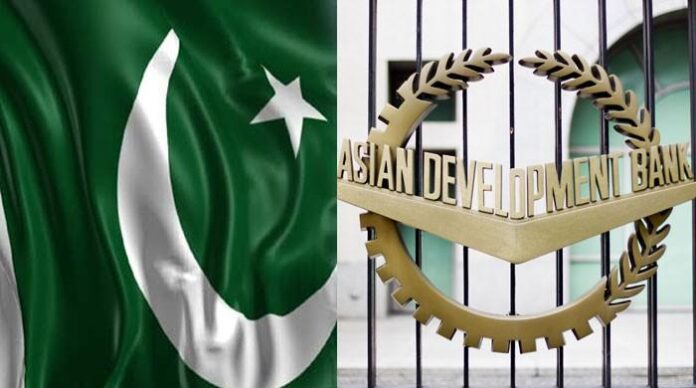ISLAMABAD: The Asian Development Bank (ADB) has projected that Pakistan’s economy, which is expected to contract by 0.4 per cent in Fiscal Year 2019-20 due to the outbreak of the Covid-19 will regain momentum and grow at 2 per cent in the upcoming fiscal year 2020-21.
“Pakistan’s economy was on the path to recovery before Covid-19, and once the Covid-19 impact subsides, Pakistan will resume its efforts to address macroeconomic imbalances and initiate structural reform, likely holding economic growth to a projected 2 per cent in FY2021,” the ADB said in a regular supplement to its annual flagship economic publication, the Asian Development Outlook (ADO) 2020, released in April.
The supplement added that India’s economy is forecast to contract by 4 per cent in FY2020, ending on March 31, 2021, before growing by 5 pc in FY2021.
With respect to inflation rate, the ADB supplement suggested that inflation rate in Pakistan would remain at 11 per cent as against the earlier projection of 11.5 per cent in the current fiscal year ending on June 30.
Similarly in the next fiscal year, the inflation rate would remain at 8 per cent against the earlier projection of 8.3 per cent.
The supplement further said that growth in developing Asia would be minimal in 2020 as containment measures to address the coronavirus disease (Covid-19) pandemic hamper economic activity and weaken external demand, according to a new set of forecasts from the ADB.
ADB forecasts growth of 0.1 per cent for the region in 2020 which is down from the 2.2 per cent forecast in April and would be the slowest growth for the region since 1961.
Growth in 2021 is expected to rise to 6.2 per cent, according to a forecast made in April.
Excluding the newly industrialised economies of Hong Kong, China, Republic of Korea and Singapore, developing Asia is forecast to grow by 0.4 per cent this year and 6.6 per cent in 2021.
“Economies in Asia and the Pacific will continue to feel the blow of the Covid-19 pandemic this year even as lockdowns are slowly eased and select economic activities restart in a ‘new normal’ scenario,” said ADB Chief Economist Yasuyuki Sawada in a statement issued here.
“While we see a higher growth outlook for the region in 2021, it is mainly due to weak numbers this year, and this will not be a v-shaped recovery. Governments should undertake policy measures to reduce the negative impact of Covid-19 and ensure that no further waves of outbreaks occur.”
Risks to the outlook remain on the downside. The Covid-19 pandemic may see multiple waves of outbreaks in the coming period and sovereign debt and financial crises cannot be ruled out. There is also the risk of renewed escalation in trade tensions between the United States (US) and China.
East Asia is forecast to grow at 1.3 per cent in 2020—the only sub-region to experience growth this year—while growth in 2021 will recover to 6.8 per cent. Growth in China is forecast at 1.8 per cent this year and 7.4 per cent in 2021, compared to the April estimates of 2.3 per cent and 7.3 per cent, respectively.
Hit hard by Covid-19, South Asia is forecast to contract by 3 per cent in 2020, compared to 4.1 per cent growth predicted in April. Growth prospects for 2021 are revised down to 4.9 per cent from 6.0 per cent.
Economic activity in Southeast Asia is expected to contract by 2.7 per cent this year before growing by 5.2 per cent in 2021. Contractions are forecast in key economies as containment measures affect domestic consumption and investment, including Indonesia (-1.0 per cent), the Philippines (-3.8 per cent), and Thailand (-6.5 per cent). Vietnam is forecast to grow at 4.1 per cent in 2020. While that is 0.7 percentage points lower than ADB’s April estimates, it is the fastest growth expected in Southeast Asia.
Central Asia’s economic activity is expected to contract by 0.5 per cent compared to the 2.8 per cent growth forecast in April due to trade disruptions and low oil prices. Growth is forecast to recover to 4.2 per cent in 2021.
Restricted trade flows and declining tourism numbers have dampened economic outlook for the Pacific sub-region. The sub-regional economy is forecast to contract by 4.3 per cent in 2020 before rising to 1.6 per cent growth in 2021.
Inflation for developing Asia is forecast at 2.9 per cent in 2020, down from a forecast of 3.2 per cent in April, reflecting depressed demand and lower oil prices. In 2021, inflation is expected to ease to 2.4 per cent.




